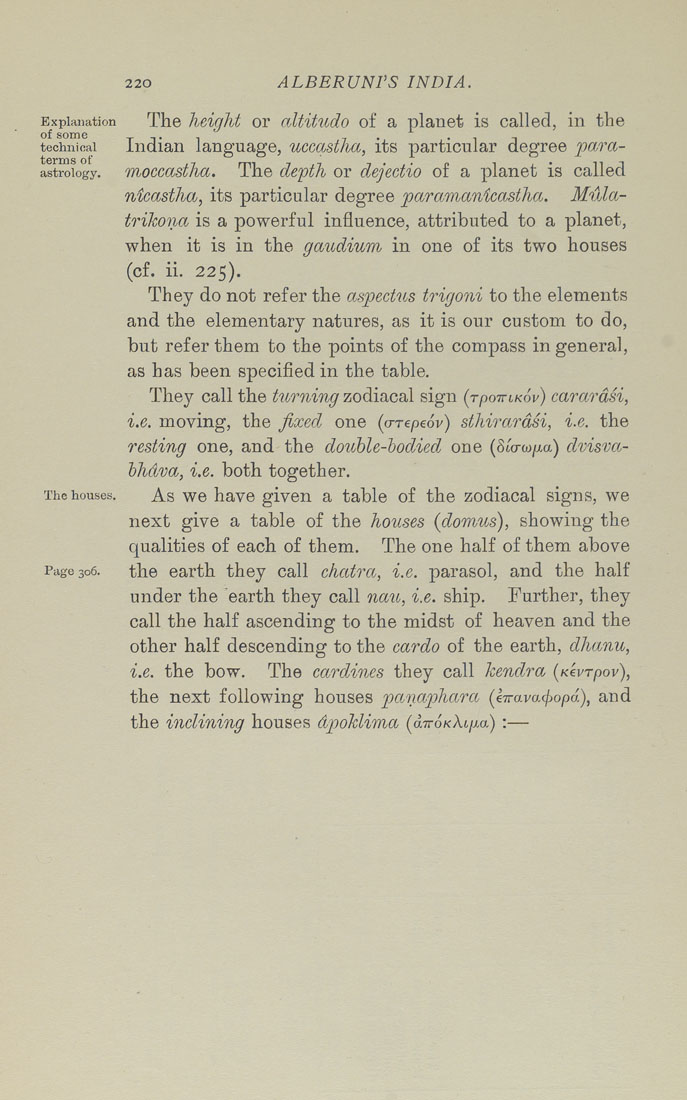220 ALBERUNTS INDIA.
Explanation The height or a,ltitudo of a planet is called, in the
of some _ -,. . . -11
technical Indian language, uceastha, its particular degree para-
astroiogy. moccastha. The depth or dejectio of a planet is called
nicastha, its particular degree para,mctnieastha. Miila-
trikona is a powerful influence, attributed to a planet,
when it is in the gaudium in one of its two houses
(cf. ii. 225).
They do not refer the ctspectus trigoni to the elements
and the elementary natures, as it is our custom to do,
but refer them to the points of the compass in general,
as has been specified in the table.
They call the turning zodiacal sign (rpoTnKov) carctrdsi,
i.e. moving, the fxed one (o-re^eoj') sthirardsi, i.e. the
resting one, and the douhle-bodied one (StVoj/xa) dvisva-
bhctva, i.e. both together.
The houses. As WO havc givcu a table of the zodiacal signs, we
next give a table of the houses (domus), showing the
qualities of each of them. The one half of them above
Page 306. the earth they call chcttrct, i.e. parasol, and the half
under the earth they call nctu, i.e. ship. Further, they
call the half ascending to the midst of heaven and the
other half descending to the cardo of the earth, dhanu,
i.e. the bow. The cctrdines they call kenclra (KevTpov),
the next following houses pctnap)hctrct (cTrai/ac^opa), and
the inclining houses dpoklima (diroKXiiJi-a) :—
|








